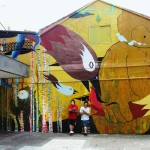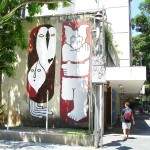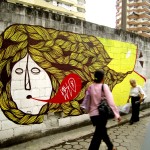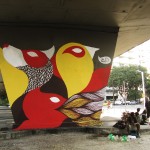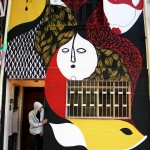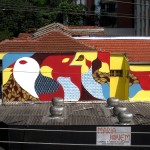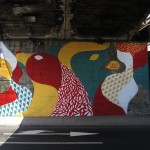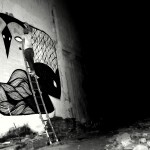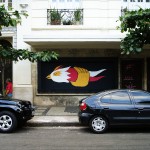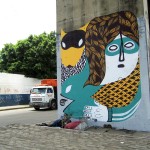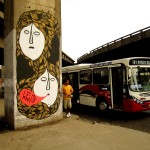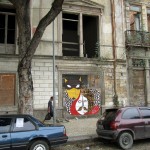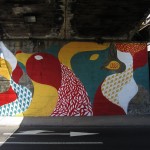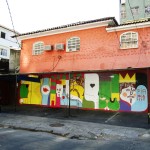By Nathan M. Walters, Contributing Reporter
RIO DE JANEIRO, BRAZIL – “Is this still graffiti?” Lelo, a Carioca street artist direct from Copacabana, finds himself asking this question about his own work and those of his peers more often these days. It’s a difficult question, and one that continues to divide the art world as well as casual observers.

“In the Eighties, there was a lot of pixação (graffiti lettering originating in São Paulo) around Rio. So in the Nineties when early forms of street art started popping up in Rio, people were more tolerant, thinking ‘that’s an improvement,’” describes Lelo.
Rio is actually relatively accepting of both street art and its lesser-respected progenitor, graffiti. The city is known as being progressive in its approach to public art, one of the few cities with a law permitting street art with the owner’s consent (Law 706/07 passed in 2009).
As a result, Rio has seen previously unsightly spaces transformed into impressive works of art. That’s not to say most of the street art or graffiti seen around Rio is legal, most of it is not, though the law is a move in a more forgiving direction.
“In high school, my friends were starting to do ‘tags’ around Rio, I started there, focusing on the cartoonish hip-hop style from the Eighties, but I started studying more and my work moved in the direction of European muralism which is what I mainly do these days,” recalls Lelo.
Lelo is one of the most recognizable street artists in Rio and is quickly gaining recognition around the world. His work is bold and thought provoking, unconventional and innovative in its blending of the street art medium with fable-like forms of birds, fishes, and wolves.

“I was reading more about muralism, about the story-telling purpose of the genre. I combined that with ideas I had encountered in my life.” Lelo has done pieces all over Rio, with a heavy concentration in Botafogo, and has worked with other of Rio’s talented young artists, including members of Rio’s Fleshbeck Crew, namely Pia’.
For the moment, Lelo is doing more gallery work in São Paulo (a city whose street art scene has produced some of the most well-known post-graffiti talent in the world, namely, twin brothers Os Gêmeos) but is also working internationally.
“This month I will participate in a mural summit in Washington D.C., last year I was working in Berlin. I’ve started doing more ‘traditional’ artwork in São Paulo with Choque Culture Gallery but still find time to work on the street,” Lelo shares.
The move from public art to gallery exhibitions is a common path for talented street artists in Rio. More former graffiti artists are applying the techniques learned on the streets to different media: sculpture and oils are only a few of the areas Lelo is branching out into.
Rio’s art community is welcoming to the young talent which is now not only known for work that can be seen on the walls around Jardim Botânico but also in local museum exhibitions that have focused on emerging street artists.
Lelo’s success is also putting him in a better position to help the next generation get interested in art. “I give demonstrations to students in public schools in São Paulo. It helps them better understand art by presenting it in a way that they can identify with.”
Street art, as opposed to vandalism, is a movement focused on supporting communities through unconventional beautification. Lelo’s work moves this agenda further in Rio, which promotes a greater acceptance of street art. This in turn leads to new high-quality artwork, which, hopefully, results in stronger communities. Still leaves the question unanswered though, “Is this still graffiti?”


